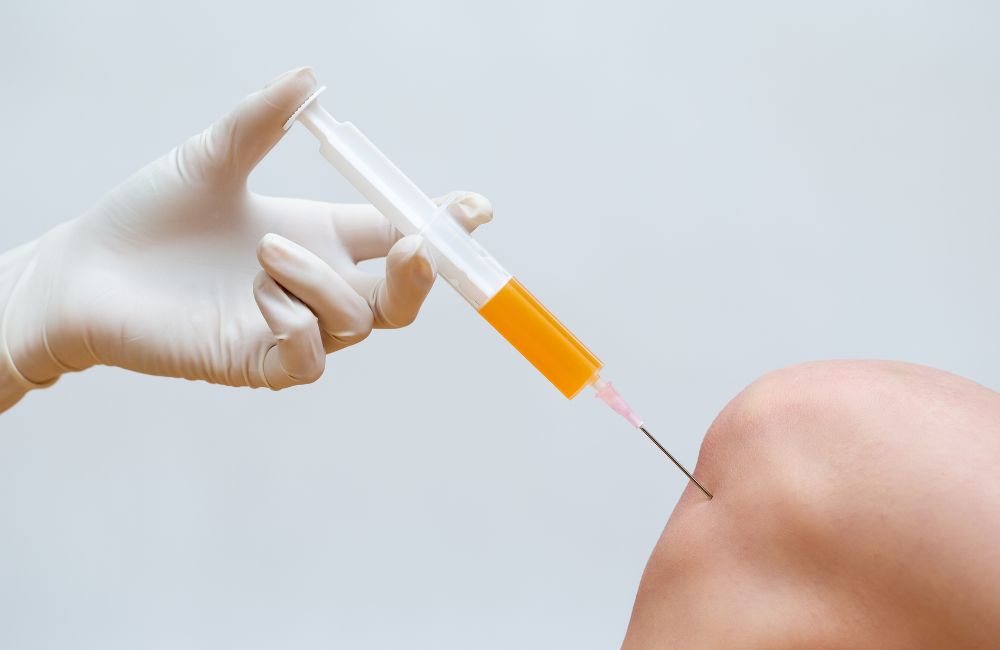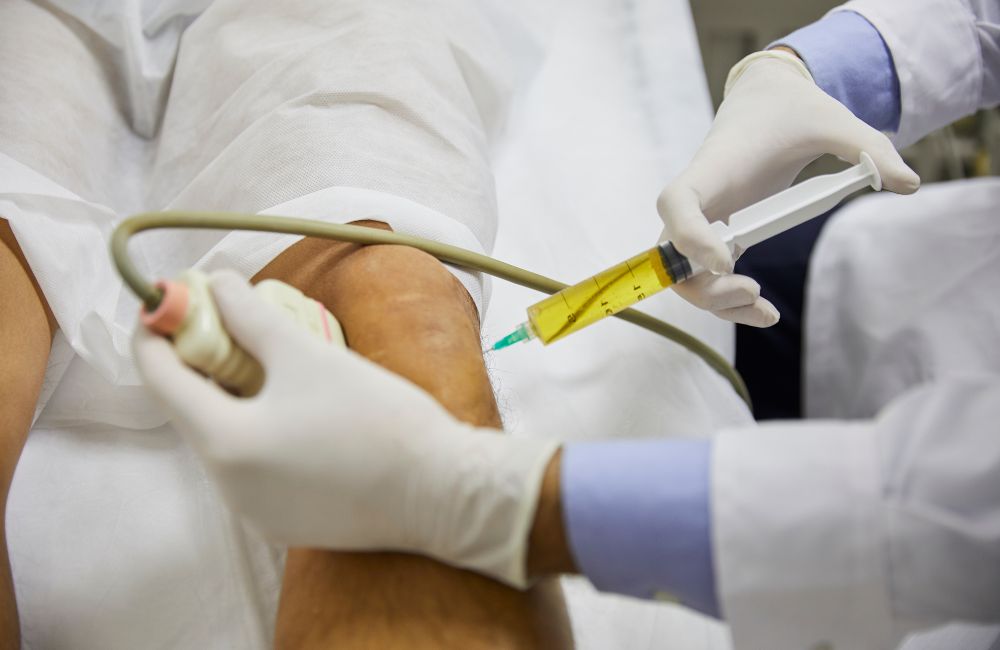
Stem cell therapy is a rapidly evolving field in modern medicine, offering promising treatments for a variety of conditions. As a relatively new and developing treatment, it is crucial to be well-informed before deciding if stem cell therapy is right for you. We will equip you with essential questions to ask your doctor, ensuring you make a well-informed decision about undergoing stem cell therapy.
Table of Contents
Introduction
Key Takeaways
What is Stem Cell Therapy?
7 Questions to Ask Your Doctor Before Starting Stem Cell Therapy
Frequently Asked Questions
| Key Takeaways ✔ Stem cell therapy uses stem cells to repair or replace damaged tissues, treating conditions like arthritis, spinal cord injuries, and heart disease. ✔ The benefits of stem cell therapy include tissue regeneration, inflammation reduction, and improved function, while risks involve infection, rejection, tumor formation, and unproven treatments. ✔ Eligibility for stem cell therapy depends on the type of condition, disease stage, and overall health, requiring a thorough medical history review. ✔ The procedure involves several steps: consultation, preparation, harvesting, processing, injection, and follow-up, with preparation possibly involving fasting and medication adjustments. |
What is Stem Cell Therapy?
Stem cell therapy involves using stem cells to repair, regenerate, or replace damaged or diseased tissues in the body. Stem cells are unique because they can develop into different types of cells, such as muscle cells, nerve cells, and blood cells. This versatility makes them incredibly valuable for treating a wide range of medical conditions. The goal of stem cell therapy is to harness the regenerative potential of these cells to promote healing and recovery in various parts of the body.
Common Conditions Treated with Stem Cell Therapy
Stem cell therapy is being explored for numerous medical conditions. Some of the most common applications include:
- Arthritis: Stem cell therapy can help reduce inflammation and repair damaged cartilage in joints affected by arthritis.
- Spinal Cord Injuries: Stem cells may aid in the regeneration of nerve cells, potentially improving function and mobility in patients with spinal cord injuries.
- Multiple Sclerosis: Stem cell therapy can potentially repair damaged myelin, the protective covering of nerve fibers, which is affected in multiple sclerosis.
- Heart Disease: Stem cells can contribute to the regeneration of heart muscle cells, improving heart function in patients with heart disease.
- Chronic Pain: Stem cell therapy can help alleviate chronic pain by repairing damaged tissues and reducing inflammation.
- Neurological Disorders: Conditions such as Parkinson’s disease and stroke may benefit from the regenerative properties of stem cells.
7 Questions to Ask Your Doctor Before Starting Stem Cell Therapy
Before getting stem cell therapy in CT, it’s crucial to be well-informed about the treatment. Asking the right questions can help you understand the benefits, risks, and what to expect throughout the process. Here are seven essential questions to discuss with your doctor to ensure you make the best decision for your health.
Question 1: What Are the Benefits and Risks of Stem Cell Therapy?
Potential Benefits
Stem cell therapy offers several potential benefits, which can vary depending on the condition being treated and the patient’s overall health:
- Regeneration of Damaged Tissues: One of the most significant benefits of stem cell therapy is its ability to regenerate and repair tissues that have been damaged by injury or disease. For example, in patients with osteoarthritis, stem cell therapy can help regenerate cartilage, leading to improved joint function and reduced pain.
- Reduction of Inflammation: Stem cells have anti-inflammatory properties, which can be beneficial for conditions characterized by chronic inflammation, such as rheumatoid arthritis and inflammatory bowel disease.
- Improved Function: By regenerating damaged tissues and reducing inflammation, stem cell therapy can improve the overall function of affected organs or body parts. For instance, patients with heart disease may experience improved heart function after stem cell therapy.
Possible Risks and Side Effects
While the potential benefits of stem cell therapy are significant, it is essential to be aware of the risks and side effects associated with the treatment:
- Infection: As with any medical procedure, there is a risk of infection. This risk is particularly relevant when stem cells are harvested from the patient or a donor and then reintroduced into the body.
- Rejection: The body may reject the stem cells, especially if they are not derived from the patient’s own tissues (allogeneic stem cells). This can lead to complications and reduce the effectiveness of the therapy.
- Tumor Formation: There is a potential risk of stem cells developing into tumors, although this is rare. It is crucial to ensure that the stem cells used are thoroughly screened and processed to minimize this risk.
- Unproven Treatments: Some clinics offer stem cell treatments that are not yet proven to be safe or effective. It is essential to choose a reputable clinic and ensure that the treatment is based on sound scientific evidence.
Question 2: Am I a Good Candidate for Stem Cell Therapy?
Factors Determining Eligibility
Eligibility for stem cell therapy depends on several factors, including the type and severity of the condition being treated, the patient’s overall health, and the availability of suitable stem cells. Key factors that determine eligibility include:
- Type of Condition: Certain conditions respond better to stem cell therapy than others. For example, stem cell therapy has shown promising results in treating joint injuries and degenerative diseases, but its effectiveness in treating other conditions may be less well-established.
- Stage of Disease: The effectiveness of stem cell therapy can vary depending on how advanced the condition is. Early intervention may lead to better outcomes in some cases.
- Overall Health: The patient’s general health and medical history play a significant role in determining if they are a suitable candidate for stem cell therapy. Patients with certain health conditions or risk factors may not be eligible for the treatment.
Medical History Considerations
Your doctor will review your medical history to determine if stem cell therapy is appropriate for you. Factors such as past treatments, allergies, and underlying health issues will be considered. It is essential to provide your doctor with a comprehensive medical history to ensure that they can make an informed assessment of your eligibility..
Question 3: What Types of Stem Cells Will Be Used in My Treatment?
Different Types of Stem Cells
There are several types of stem cells used in therapy, each with its own advantages and disadvantages:
- Autologous Stem Cells: These are derived from the patient’s own body, typically from bone marrow or adipose (fat) tissue. Because they are the patient’s own cells, the risk of rejection is minimal. Autologous stem cells are commonly used in treatments for conditions such as osteoarthritis and sports injuries.
- Allogeneic Stem Cells: These come from a donor, which can be a suitable option when autologous cells are not viable or available. Allogeneic stem cells can be derived from bone marrow, umbilical cord blood, or other sources. They may be used for treating conditions such as blood disorders and immune system deficiencies.
- Umbilical Cord Stem Cells: These are harvested from the umbilical cord blood of newborns and can be used for a variety of treatments. Umbilical cord stem cells are less likely to be rejected and have shown promise in treating conditions such as cerebral palsy and spinal cord injuries.
Question 4: What Is the Procedure Like?
Step-by-Step Overview of the Treatment Process
Understanding the procedure can help alleviate any concerns you may have. Here’s a general overview of what to expect:
- Consultation: The initial assessment involves a thorough evaluation by your doctor to determine your eligibility for stem cell therapy. This may include a physical examination, medical history review, and diagnostic tests such as imaging or blood tests.
- Preparation: Pre-treatment preparations may include fasting, medication adjustments, and other specific instructions provided by your doctor. It is important to follow these instructions closely to ensure the success of the procedure.
- Harvesting Stem Cells: If autologous stem cells are used, they will be collected from your body, typically from bone marrow or adipose tissue. This process may involve a minor surgical procedure or needle aspiration.
- Processing Stem Cells: The harvested stem cells are processed and prepared for injection. This step may involve isolating and concentrating the stem cells to enhance their therapeutic potential.
- Injection: The prepared stem cells are injected into the affected area using imaging guidance (such as ultrasound or fluoroscopy) to ensure precise placement. The injection procedure is usually minimally invasive and may be performed on an outpatient basis.
- Follow-Up: After the procedure, you will have follow-up appointments to monitor your progress and assess the effectiveness of the treatment. Your doctor may recommend additional treatments or adjustments to your care plan based on your response to the therapy.
Preparation Required Before the Procedure
Preparation can vary depending on the type of stem cell therapy but may include:
- Fasting: In some cases, you may need to fast for a certain period before the procedure to reduce the risk of complications.
- Medication Adjustments: Your doctor may adjust your medications to optimize the treatment. For example, certain medications that affect blood clotting may need to be temporarily discontinued.
- Lifestyle Modifications: Your doctor may recommend specific lifestyle changes, such as avoiding certain activities or substances, to prepare your body for the procedure.
What to Expect During and After the Procedure
During the procedure, you may experience mild discomfort or pressure at the injection site. Local anesthesia or sedation may be used to minimize any discomfort. The entire procedure typically takes a few hours, and most patients can go home the same day.
Post-procedure, there may be some swelling, soreness, or bruising at the injection site. Recovery times can vary depending on the type of stem cell therapy and the condition being treated. Many patients report improvements within a few weeks to months.

Question 5: What Are the Success Rates for My Condition?
Statistics and Data on Success Rates
Success rates for stem cell therapy can vary widely depending on the condition being treated, the patient’s overall health, and the specific treatment protocol. Here are some examples of success rates for common conditions treated with stem cell therapy:
- Arthritis: Stem cell therapy can reduce pain and improve joint function in patients with osteoarthritis and rheumatoid arthritis. The effectiveness of stem cell therapy for arthritis may depend on factors such as the severity of the condition and the patient’s age.
- Spinal Cord Injuries: Research indicates varying success rates, with some patients experiencing significant improvements in mobility and function. For example, a meta-analysis showed that 48.9% of patients with spinal cord injuries showed improvements after stem cell therapy.
- Heart Disease: Clinical trials have demonstrated that stem cell therapy can improve heart function and reduce symptoms in patients with heart disease. An analysis published in the Journal of the American College of Cardiology found that a single administration of adult stem cells directly into an inflamed heart via a catheter can result in a long-term 58% reduction in the risk of heart attack or stroke for heart failure patients with reduced ejection fraction.
Factors Influencing the Success of the Therapy
Several factors can influence the success of stem cell therapy, including:
- Patient’s Age: Younger patients tend to respond better to stem cell therapy due to the higher regenerative capacity of their cells.
- Severity of Condition: Less advanced conditions generally have higher success rates because there is less extensive damage to repair.
- Type of Stem Cells Used: The source and type of stem cells can affect outcomes. For example, autologous stem cells may be more effective for certain orthopedic conditions, while allogeneic stem cells may be preferred for treating blood disorders.
- Treatment Protocol: The specific treatment protocol, including the dosage and method of stem cell administration, can impact the effectiveness of the therapy.
Question 6: What Are the Costs and Is It Covered by Insurance?
Breakdown of Costs Involved in Stem Cell Therapy
The costs of stem cell therapy can vary widely depending on several factors, including the type of treatment, the clinic, and the geographic location. Typical costs can range from $5,000 to $50,000 or more. Factors influencing the cost include:
- Type of Stem Cells Used: Autologous stem cells tend to be less expensive than allogeneic stem cells due to the additional processing and screening required for donor cells.
- Complexity of the Procedure: More complex procedures, such as those involving multiple injections or surgical interventions, are generally more expensive.
- Clinic Reputation and Experience: Clinics with a high level of expertise and a strong reputation may charge higher fees for their services.
Insurance Coverage and Reimbursement Options
Insurance coverage for stem cell therapy is often limited, as many treatments are still considered experimental or investigational by insurance companies.
However, some insurance plans may cover certain aspects of the treatment, such as the initial consultation, diagnostic tests, or post-treatment follow-up care. It is important to check with your insurance provider and discuss reimbursement options with your clinic to understand what costs may be covered.
Financial Planning Tips for Treatment
Managing the financial aspects of stem cell therapy can be challenging, but there are several strategies to help you plan for the costs:
- Consult Multiple Providers: Get quotes from several clinics to compare costs and services. This can help you find the best value for your treatment.
- Payment Plans: Ask about payment plans or financing options offered by the clinic. Many clinics offer flexible payment options to help patients manage their costs.
- Insurance Pre-Authorization: Obtain pre-authorization from your insurance company to understand what aspects of the treatment may be covered. This can help you plan for out-of-pocket expenses.
- Health Savings Accounts (HSAs) and Flexible Spending Accounts (FSAs): If you have an HSA or FSA, consider using these funds to cover eligible medical expenses related to stem cell therapy.
Question 7: What Should I Expect During the Recovery Process?
Typical Recovery Timeline
Recovery times can vary depending on the type of stem cell therapy and the condition being treated. Generally, patients can expect the following recovery timeline:
- Initial Recovery: The initial recovery period typically lasts 1-2 weeks, during which you may experience mild discomfort, swelling, or bruising at the injection site.
- Full Recovery: Full recovery and the realization of the therapy’s benefits can take several months. Many patients report gradual improvements in symptoms and function over this period. Your doctor will monitor your progress through follow-up appointments and may recommend additional treatments or adjustments to your care plan as needed.
Post-Treatment Care and Follow-Up
Post-treatment care is crucial for optimal recovery and maximizing the benefits of stem cell therapy. Key aspects of post-treatment care include:
- Physical Therapy: Engaging in physical therapy can help restore function and strength to the treated area. Your doctor may recommend specific exercises or refer you to a physical therapist.
- Follow-Up Appointments: Regular follow-up appointments with your doctor are essential to monitor your progress and assess the effectiveness of the treatment. Your doctor may perform additional imaging or tests to evaluate the results.
- Lifestyle Modifications: Your doctor may recommend lifestyle changes, such as maintaining a healthy diet, staying active, and avoiding activities that may strain the treated area. These modifications can support your recovery and overall health.

Frequently Asked Questions
How long do the effects of stem cell therapy last?
The effects vary; some patients experience benefits for several years, while others may need additional treatments.
What is the success rate of stem cell therapy for back pain?
Success rates for back pain vary, with many patients reporting significant pain reduction and improved mobility. Clinical studies show success rates of 40.7%.
Is stem cell therapy FDA approved?
The FDA has approved some stem cell therapies for specific conditions, but many treatments remain experimental. Consult your healthcare provider for details.
How do I find a reputable stem cell therapy clinic?
Research the clinic’s credentials, read patient reviews, check affiliations with medical institutions, and verify the qualifications of the medical staff. Ask your primary care physician for recommendations.
What are the ethical considerations of stem cell therapy?
Ethical considerations include the source of stem cells, informed consent, and potential exploitation in unregulated clinics. Discuss these with your doctor to ensure the therapy aligns with your values.
Start Your Journey to Better Health
Ensure you are making the best decision for your health by asking these essential questions. For expert guidance and top-quality care, visit BioRestore, conveniently located in CT. Our experienced team is here to help you navigate the process and achieve the best possible outcomes with stem cell therapy. Schedule your consultation with BioRestore in CT today and take the first step towards improved health and wellness!